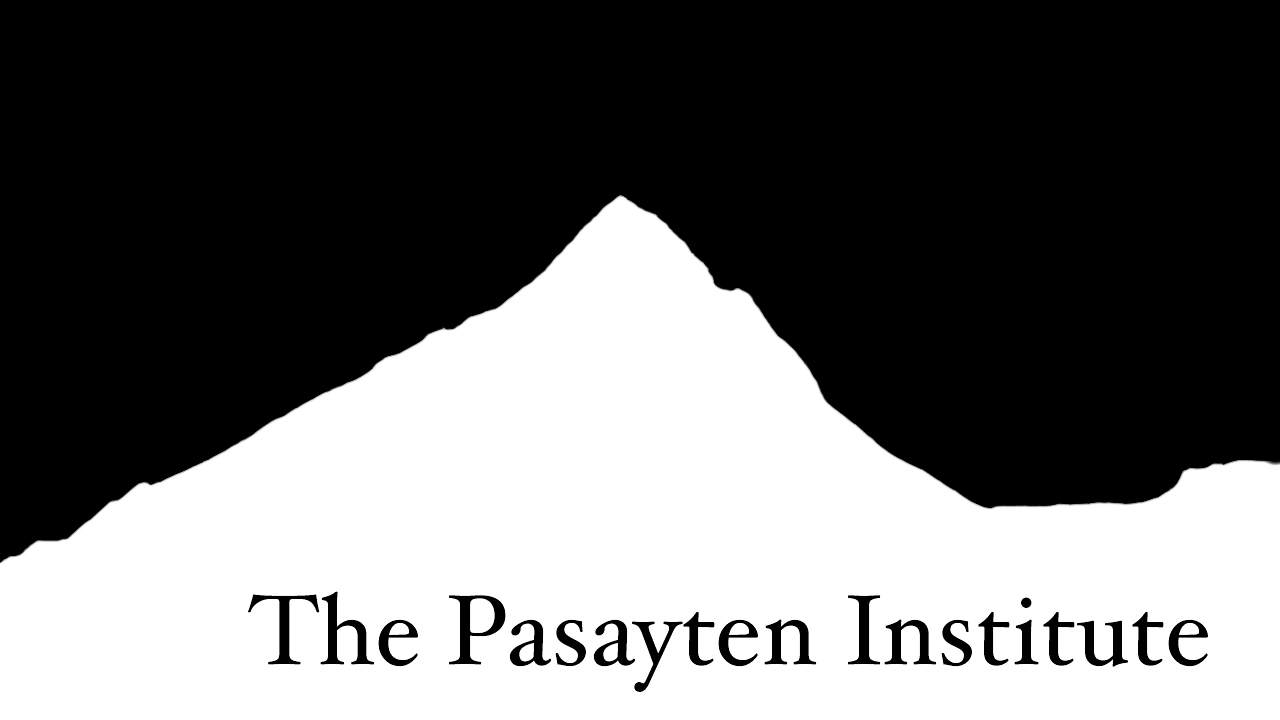The fundamental representation of $\mathfrak{sl}_{2}$
Let $V$ be a finite-dimensional complex vector space.
Last time we explored the complex Lie algebra $\mathfrak{gl}(V)$ and a few of its real subalgebras. Specifically, we explored the self-adjoint and anti self-adjoint matrices as real subspaces of $\mathfrak{gl}(V)$. The complex span of either set of matrices - together with the commutator - are equivalent and return us to $\mathfrak{gl}(V)$
From $\mathfrak{gl}(\mathbb{C}^{2})$ to $\mathfrak{sl}(\mathbb{C}^{2})$
Today we will specialize to $V = \mathbb{C}^{2}$.
In this case, four linearly independent self-adjoint matrices are
\begin{equation}\label{sigmas}\sigma_{0} = \left(\begin{array}{rr} 1 & 0 \\ 0 & 1\end{array}\right),\quad \sigma_{1} = \left(\begin{array}{rr} 0 & 1 \\ 1 & 0\end{array}\right),\quad \sigma_{2} = \left(\begin{array}{rr} 0 & -i \\ i & 0\end{array}\right),\quad \sigma_{3} = \left(\begin{array}{rr} 1 & 0 \\ 0 & -1\end{array}\right).\end{equation}
Linear independence as vectors can be checked explicitly or with the help of the Killing form:
$$\langle X, Y \rangle = \mathsf{Tr}(X,Y).$$
It might also amuse you to observe that their inverse image under the physicists $\mathcal{I}$-map presents a representation of the Quaternions:
$$ -i \sigma_{1} \rightarrow I, \quad -i \sigma_{2} \rightarrow J, \quad -i \sigma_{3} \rightarrow K.$$
To further specialize from $\mathfrak{gl}(\mathbb{C}^{2})$ to $\mathfrak{sl}(\mathbb{C}^{2})$ is easy. The latter are \emph{traceless} matrices, and therefore excludes the complex span of $\sigma_{0}$. We are particularly interested in the traceless case, as
$$\det U = e^{\mathsf{Tr}A},$$
so that if $\mathsf{Tr}\,A = 0$ then $\det U = 1$.
Revisiting the real subalgebras
An important contrast will arise when we consider the so-called real, compact form of $\mathfrak{sl}_{2}$, which physicists take to be the real span of $\sigma_{1},\sigma_{2},$ and $\sigma_{3}$:
$$\mathfrak{su}_{2} = \mathsf{span}_{\mathbb{R}}\left\{ \sigma_{1} , \sigma_{2} , \sigma_{3}\right\}$$ This Lie algebra is particularly important as it exponentiates up to the $2\times 2$ unitary matrices with unit determinant. This is compact as a 3-manifold$^{1}$ and as a Lie group enjoys finite-dimensional unitary representations.
Hopefully it is clear that the compact real form is precisely the same thing as the real span of the self-adjoint matrices. As we've already discussed, this algebra is isomorphic to the real span of the anti self-dual matrices.
Exercise 1: Verify that all real subalgebras of $\mathfrak{sl}_{2}$ are isomorphic to $\mathfrak{su}_{2}$ or a different Lie subalgebra. That is, there are only two “real” forms of $\mathfrak{sl}_{2}$, up to Lie algebra isomorphism. Argue that the different Lie algebra is $\mathfrak{sl}_{2}\mathbb{R}$, the traceless, real $2\times 2$ matrices taken as a Lie algebra under commutators. What can you say about the Killing Form on $\mathfrak{su}_{2}$ versus $\mathfrak{sl}_{2}$? Is $\mathfrak{sl}_{2}\mathbb{R}$ also compact?
The Spectra of $\mathfrak{sl}_{2}$
The spectral structure of $\sigma_{3}$ is manifest. Its two eigenvectors in $\mathbb{C}^{2}$ are:
$$ | \uparrow\; \rangle = \left(\begin{array}{c} 1 \\ 0\end{array}\right),\quad | \downarrow\; \rangle = \left(\begin{array}{c} 0 \\ 1\end{array}\right).$$
Here these funny one-sided brackets are simply the physicists notation for vectors$^{2}$.
The eigenvalues associated to these eigenvectors $1$ and $-1$, manifestly. More generally:
Claim 1 : The eigenvalues for each of the $\sigma_{i}$ matrices are $\pm 1$.
Exercise 2: Prove Claim 1. Hence argue that everything we're about to say about the structure of $\mathfrak{sl}_{2}$ is independent of our choice of basis. (Hint: Use the Killing Form).
Consider the linear maps between these eigenvectors,
$$\sigma^{+} | \downarrow \;\rangle = | \uparrow \;\rangle,\quad \sigma^{-} | \uparrow \;\rangle = | \downarrow \;\rangle.$$
Because $\sigma_{3}$ is diagonal, we can infer these matrices immediately:
$$\sigma^{+} = \left(\begin{array}{cc} 0 & 1 \\ 0 & 0 \end{array}\right),\quad \sigma^{-} = \left(\begin{array}{cc} 0 & 0 \\ 1 & 0 \end{array}\right).$$
They are just representatives of the upper and lower triangular matrices for $\mathfrak{sl}_{2}$. You might notice that both
$$\sigma^{+} | \uparrow \;\rangle = 0 = \sigma^{-} | \downarrow \;\rangle,$$
which in this, two-dimensional representation of $\mathfrak{sl}_{2}$ is true because the strictly upper/lower triangular matrices are nilpotent:
\begin{equation}\label{nil}\sigma^{+ 2} = 0 = \sigma^{- 2}.\end{equation}
As it turns out, this structure is generic amongst all finite-dimensional representations of $\mathfrak{sl}_{2}$.
The two eigenspace maps are manifestly not (anti) self-adjoint. Instead, they map to each other
$$\sigma^{\pm\dagger} = \sigma^{\mp}.$$
Carrying our analogy of real and complex numbers forward, $\sigma^{\pm}$ instead correspond to holomorphic and antiholomorphic coordinates. Indeed, in the two-dimensional representation of $\mathfrak{sl}_{2}$, the maps between eigenspaces, $\sigma^{\pm}$ can be written explicitly in terms of the the $\sigma$-matrices \eqref{sigmas}
\begin{equation}\label{raising}\sigma^{\pm} = \sigma_{1} \pm i \sigma_{2}.\end{equation}
It is therefore interesting to note that the products $\sigma^{+}\sigma^{-}$ and $\sigma^{-}\sigma^{+}$ are both self-adjoint. In particular,
$$\sigma^{+}\sigma^{-} |\uparrow \;\rangle = \sigma^{+}|\downarrow \;\rangle = |\uparrow\; \rangle.$$
The product $\sigma^{+}\sigma^{-}$ is \emph{not} invertible, however. Rather, it is a projection operator. Let $\lambda$ be a complex scalar. Then, by \eqref{nil}
$$\sigma^{+}\sigma^{-} \left( |\uparrow \;\rangle + \lambda | \downarrow \;\rangle \right) = |\uparrow \;\rangle.$$
Similarly
$$\sigma^{-}\sigma^{+} \left( |\uparrow \;\rangle + \lambda | \downarrow \;\rangle \right) =\lambda |\downarrow \;\rangle.$$
Amusingly, however, their linear combination:
$$\sigma^{+}\sigma^{-} - \sigma^{-}\sigma^{+},$$
is self-adjoint and invertible. In fact,
Exercise 3 : Verify that $[\sigma^{+},\sigma^{-}] = \sigma_{3}.$
Although this isn't surprising, it's literally the spectral decomposition of $\sigma_{3}$. There are a few more useful facts worth checking before we discuss more general representations.
Exercise 4 : Verify by explicit computation the commutators
$$[\sigma_{3},\sigma_{\pm}] = \pm 2\sigma_{\pm}.$$
Exercise 5 : Compute all Killing Forms one can form between the three matrices $\sigma_{+}$, $\sigma_{-}$ and $\sigma_{3}$.
$^{1}$ : To verify this, consider the unit-quaternion analogy above.
$^{2}$ : Physicists utilize them to make their dual vectors under the adjoint operation,
$$\langle\; \uparrow| = \left(\begin{array}{cc} 1 & 0\end{array}\right),\quad \langle \;\downarrow | = \left(\begin{array}{cc} 0 & 1\end{array}\right)$$
so that the inner product between the two is written as
$$\langle \alpha | \beta \rangle.$$
